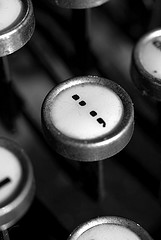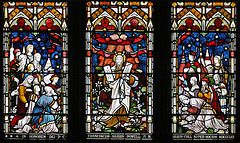Okay, so there’s a day for everything. I really like National Punctuation Day, though, because—nerdy-girl confession coming—I really like punctuation! And grammar, vocabulary, all of it.
A few years ago, there was a best-selling book out called Eats, Shoots & Leaves: The Zero-Tolerance Approach to Punctuation, by Lynne Truss (she’s an English woman; the Brits are the experts on these matters). Its title illustrates the importance of a mere comma. Without it, we’re talking about a nonhuman primate who, for the most part, “eats shoots and leaves.” Add the comma and we’re referring to a criminal whose whose gluttonous and violent break-in m.o. is that he “eats, shoots and leaves.”
I must admit to owning a copy of Eats, Shoots & Leaves, as well as Strunk & White’s classic The Elements of Style (the White of that authorship team is E.B. White of Charlotte’s Web fame), Shertzer’s The Elements of Grammar, and Plotnik’s The Elements of Editing, as well as the labyrinthian Chicago Manual of Style, the guide to which every book is to conform. They’re on a shelf with my two thesauruses and a real dictionary. I know there’s one in the computer, but sometimes I just want to look up a word.
Obviously, anybody who reads books like these has favorites—words, grammatical constructs, and even (happy holiday) bits of punctuation. Here are my punctuation all-stars:

1. The semi-colon (;). I miss the semi-colon and wish it were used more often. It’s to separate two independent clauses. I could write, “I actually like punctuation. I guess that makes me a kind of geek.” What I would write, however (favoring the semi-colon as I do), is: “I actually like punctuation; I guess that makes me a kind of geek.”
2. The exclamation mark (!). Unlike the underused semi-colon, the exclamation mark is used way too much, especially in advertising:
Incredible offer!
Don’t wait!
You could miss it!
Prices will never be this low again!
Strunk and White say that the only admissable use of this exclamatory underscoring is in conjunction with a bona fide exclamation, i.e., “Wow!” “Good heavens!” or “Jumpin’ juniper, Batman!” We’ve loosened up in recent years and it is acceptable to use “!” to add an exclamatory element to an otherwise unremarkable sentence. I did it in the first paragraph of this post when I wrote: “…I really like punctuation!” But enough is enough.
3. The colon (:) and the capital. I’ve learned more about punctuation as an adult than I did as student, because I’m tutored every couple of years by the copy-editors who go through my books to find typos, improper usages, and poorly placed commas and the like. My last copy-editor finally cleared up when to use a capital letter after a colon and when not to. If the phrase following the colon is the only one that relates to it, go with lower case. If there will be an additional sentence (or an additional independent clause separated by a semi-colon), use a cap, i.e., “Here’s what I do when I wake up in the morning: write a gratitude list, meditate, and have a short phone conversation with my action partner.” Or, “Here’s what I do when I wake up in the morning: Write a gratitude list, meditate, and have a short phone conversation with my action partner. Then I get up, make fresh juice, and dress for the gym. I work out, take my shower and have breakfast, and I’m at my desk by 9.”
4. The period (.) that, these days, seems less final. In the typewriter era, the period that ended a sentence was followed by two spaces. With the advent of computers, we’ve cut that back to one. It’s fine. There was just something decisive about the period, speck though it may be, calling for two spaces.
5. The ever elegant dash (—). Emails and blogs and other quick writings have given the dash elevated status. It used to be that “Dear Jane” was followed by a friendly comma, and “Dear Mr. Peterson” by the more businesslike colon. Nowadays, we can follow either with a dash. The dash seems to step in where, in English class, parentheses or a colon or a comma or two would have been the “right answer.” I’m fond of the dash for handwritten communication because you can do so much with it. It can be a mere line, or something with finesse and flourish. Visualize these handwritten and how the dashes in each ought to look: “Joe—I’ve gone out for toilet paper—back in ten” versus “Darling—This is the last time you’ll ever hurt me—I’ve gone for good!” (Yeah, that one could use an exclamation mark.)

